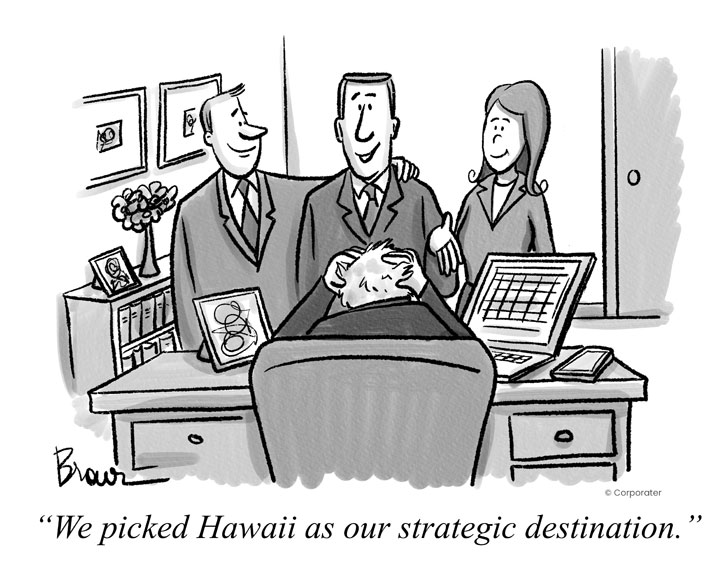
Have you ever heard about a strategic destination statement? Not many people have, and not many organizations have one. Perhaps it’s because mission and vision statements are already two too many to remember. Strategic destination statement can, however, be quite useful. Allow us to elaborate.
A strategic destination statement is like a vision statement with a clearly articulated long-term description of the desired state of an organization at a particular future point in time. For instance, in 3-5 years. It typically includes positional descriptive sentences about the areas and aspects of your business that you can control, such as sales, markets, finances, profit, products, processes, people, competence, and systems. The statement is quantifiable and tells what the future success looks like. At its core, it doesn’t focus so much on how the business will get to the future state, but rather on the destination itself.
Crafting a strategic destination statement is a good exercise for any company. Simply ask your team: “What does success look like for ABC group in 3-5 years’ time? Please articulate it. Don’t worry about the how we’ll get there. Just describe what it looks like.”
You may receive answers such as:
- ABC group should have an annual ARR turnover of 500 M NOK by 2025
- Income from M&A should not account for more than 50% of our growth
- Sales from partners should be 80% of our annual turnover by 2025
- Revenue should come mostly from our new GRC offering
- We will raise 800 M NOK over the next 4 years to do strategic M&A
- ABC is owned by employees (60%), 30% external, 10% VC by 2025
- ABC group will create a marketplace for 3rd party vendors to sell their services by 2024
- ABC group will be able to re-package the software platform to our partner’s brand by 2023
Once your team aligns on the what, they may start brainstorming on the how and other details to arrive at a complete version of your strategic destination statement. A complete strategic destination statement includes details related to what will be achieved, why, when, how, for who, and through what means.
Here is an example:
Eager Beaver & Son, Inc. will increase its beaver dam footprint in Norway by 2 percent to keep beaver communities safe from predators. By 2022 it will develop a program for ongoing education of fellow eager beavers, who want to improve their beaver dam-building skills and play an active role in their beaver community. Eager Beaver & Son, Inc. will differentiate its education program by offering expertise on innovative construction engineering techniques and modern architectural designs.
Now let’s break it down:
Eager Beaver & Son, Inc. Strategic Destination Statement
| Who (organization) | Eager Beaver & Son, Inc. |
| Will do what (action) | will increase its beaver dam footprint in Norway by 2% |
| Why (reason) | to keep beaver communities safe from predators |
| By when (timeframe) | By 2022 |
| How (method) | it will develop a program for ongoing education |
| For who (target market) | fellow eager beavers, who want to improve their beaver dam-building skills and play an active role in their beaver community |
| Through what (means) | offering expertise on innovative construction engineering techniques and modern architectural designs. |
Different versions of this breakdown chart exist, but you get the idea. While such a statement might be too long to remember, going through the exercise of developing a strategic destination statement might serve as an eye-opener about your organization’s strategic alignment.
In one of his books about Balanced Scorecards and operational dashboards, the author Ron Person shares a story in which chief executive officers tasked their executive teams to fill out a destination statement using a blank chart like the one you see above. The filled-out sheets were then returned to the CEOs. What the CEOs learned is that each executive had a completely different perception about where the organization was heading. There was a notable lack of clarity on the part of the executive teams, and the CEOs had a lot of communicating to do to get everyone on the same page.
We encourage you to try this exercise at your organization. You may discover a lot of surprises.

